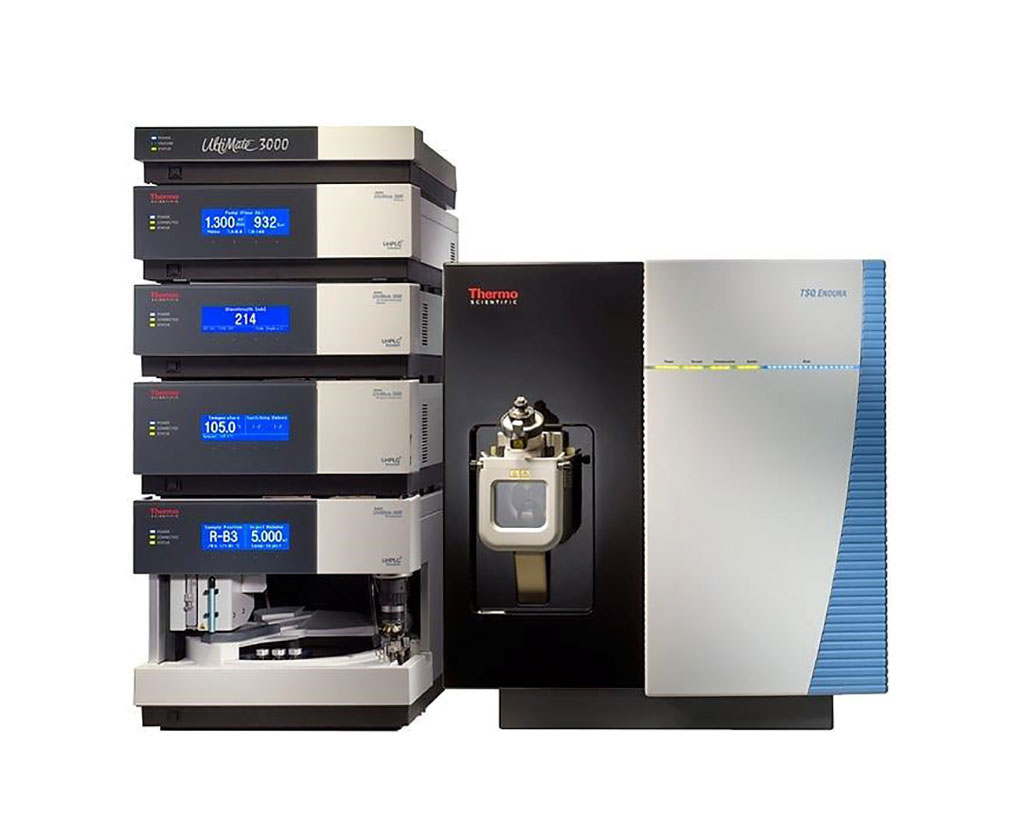Plasma Eicosanoids Characterized During Gestation Predicts Outcome
By LabMedica International staff writers
Posted on 03 Sep 2020
Fetal growth disorders are major risk factors for adverse pregnancy and later life outcomes. Proxy outcomes for disorders of fetal growth include small for gestational age (SGA) and large for gestational age (LGA) birth weight. Risk factors for SGA include maternal obstetrical complications, fetal genetic factors, infection, and various medical conditions. Posted on 03 Sep 2020
Eicosanoids, an important class of lipid mediators derived from polyunsaturated fatty acids, can act as both direct influences and biomarkers of inflammation through a variety of biological pathways. Eicosanoids produced from the oxygenation of polyunsaturated fatty acid precursors, including the primary omega-6 fatty acids (linoleic acid [LA] and arachidonic acid [AA]) and omega-3 fatty acids (docosahexaenoic acid [DHA] and eicosapentaenoic acid.

Image: The UltiMate 3000 RS HPLC system and mass spectrometer (Photo courtesy of Thermo Fisher Scientific).
Scientists from the National Institute of Environmental Health Sciences (Research Triangle, NC, USA) and their colleagues carried out a case–control study of 90 pregnant women within a cohort study that included 31 women who delivered small for gestational age (SGA) babies (SGA, ≤10th percentile), 28 who delivered large for gestational age (LGA) babies (≥90th percentile), and 31 who delivered appropriate for gestational age (AGA) babies (controls, >10th to <90th percentile).
A panel of eicosanoids and fatty acids was measured in plasma samples by the mass spectrometry. Non-esterified (free) eicosanoid and fatty acid levels were quantified by liquid chromatography with tandem mass spectrometry (LC-MS/MS). Online liquid chromatography and electrospray ionization tandem mass spectrometry of extracted plasma samples were performed on an UltiMate 3000 RS HPLC system and Quantiva mass spectrometer (Thermo Fisher Scientific, Waltham, MA, USA). For statistical analyses, they examined eicosanoids that were detected in ≥50% of all plasma samples analyzed. A total of 27 eicosanoids met this criterion while the other 30 were excluded.
The scientists reported that maternal plasma levels of eicosanoids and fatty acids generally followed U-shaped curve patterns across gestation. Bayesian models showed that associations between eicosanoids and case status varied by biosynthetic pathway. Eicosanoids derived from AA via the cytochrome P450 (CYP) and lipoxygenase (LOX) biosynthetic pathways were positively associated with SGA. The adjusted mean concentration of 12-Hydroxyeicosatetraenoic acid (12-HETE), a LOX pathway product, was 56.2% higher among SGA cases compared to AGA controls. Eicosanoid associations with LGA were mostly null, but negative associations were observed with eicosanoids derived from AA by LOX enzymes. The fatty acid precursors had estimated mean concentrations 41%–97% higher among SGA cases and 33%–39% lower among LGA cases compared to controls.
The authors concluded that eicosanoids and fatty acids systematically change in maternal plasma over pregnancy. Eicosanoids from specific inflammation-related pathways were higher in mothers of SGA cases and mostly similar in mothers of LGA cases compared to controls. These findings can provide deeper insight into etiologic mechanisms of abnormal fetal growth outcomes. The study was published on August 14, 2020 in the journal PLOS Medicine.




 assay.jpg)


 Analyzer.jpg)





